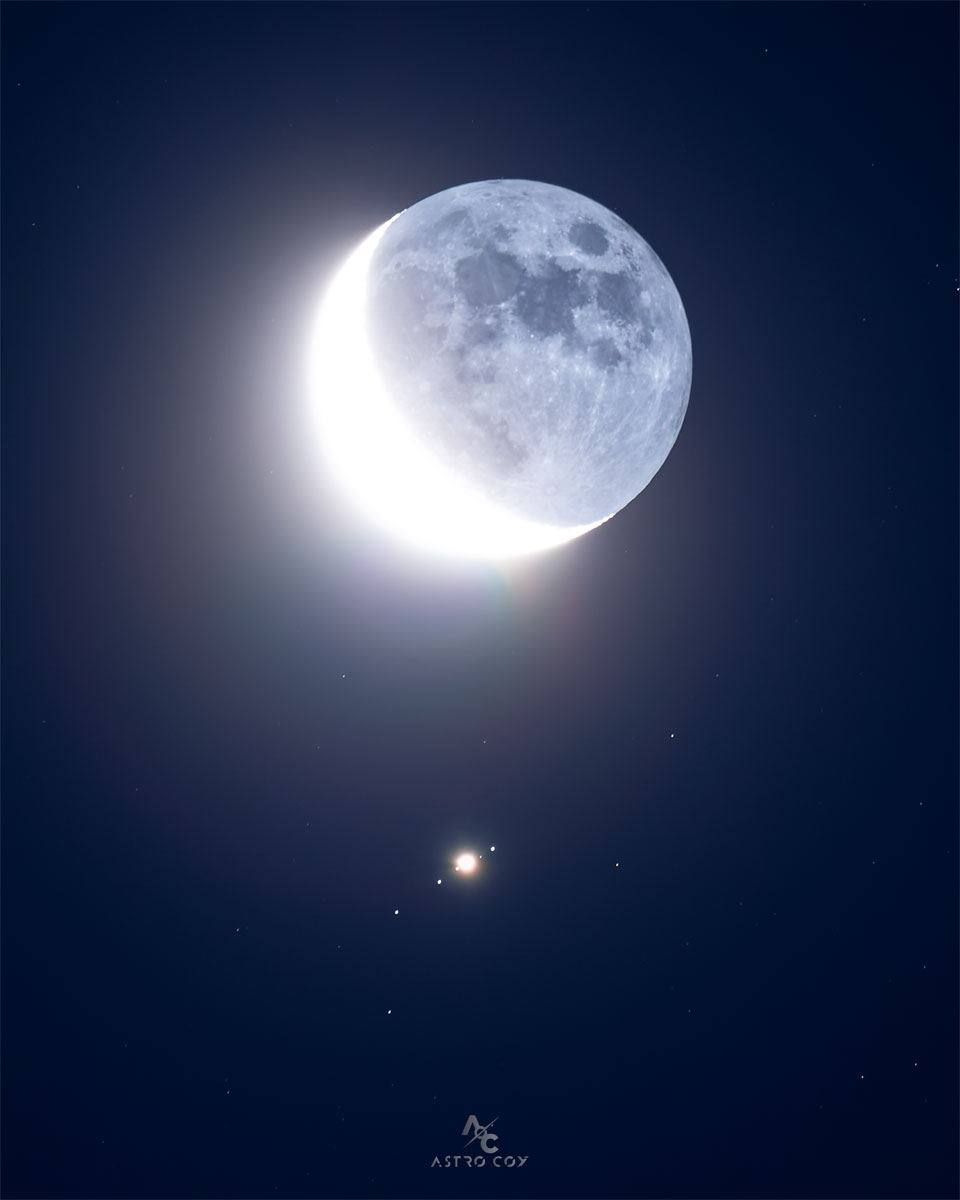2023年8月8日
Moon Meets Jupiter
Credit & Copyright: Jordi L. Coy
Explanation: What’s that below the Moon? Jupiter — and its largest moons. Many skygazers across planet Earth enjoyed the close conjunction of Earth’s Moon passing nearly in front of Jupiter in mid-June. The featured image is a single exposure of the event taken from Morón de la Frontera, Spain. The sunlit lunar crescent on the left is overexposed, while the Moon’s night side, on the right, is only faintly illuminated by Earthshine. Lined up diagonally below the Moon, left to right, are Jupiter’s bright Galilean satellites: Callisto, Ganymede, Io (hard to see as it is very near to Jupiter), and Europa. In fact, Callisto, Ganymede, and Io are larger than Earth’s Moon, while Europa is only slightly smaller. NASA’s robotic spacecraft Juno is currently orbiting Jupiter and made a close pass near Io only a week ago. If you look up in the night sky tonight, you will again see two of the brightest objects angularly close together — because tonight is another Moon-Jupiter conjunction.
Tomorrow’s picture: falling space dust
月亮与木星
影像提供与版权: Jordi L. Coy
说明: 月球下方是什么?木星和它的大卫星。地球上的许多观星者,在6月中旬见到了月亮几乎从木星前方通过的近合景观,如这幅摄于西班牙Morón de la Frontera镇的单曝光主题影像所示。影像里,左侧有受到阳光直射而过度曝光的月牙,而右侧为受到微弱地照光照耀的月球夜面。在月亮的下方,可见到木星和从左到右斜排的明亮伽利略卫星:木卫四、木卫二、木卫一(离木星太近,很难分辨)和木卫三。事实上,木卫四、木卫三和木卫一皆大于月球,只有木卫二略小。目前NASA的朱诺号航天器正在绕行木星,并且刚在1星期前近距离飞越木卫一。如果你今晚仰望夜空,将再次见到视角上相邻的这2颗最明亮的天体,因为今晚月亮与木星再次发生近合。
明日的图片: falling space dust







